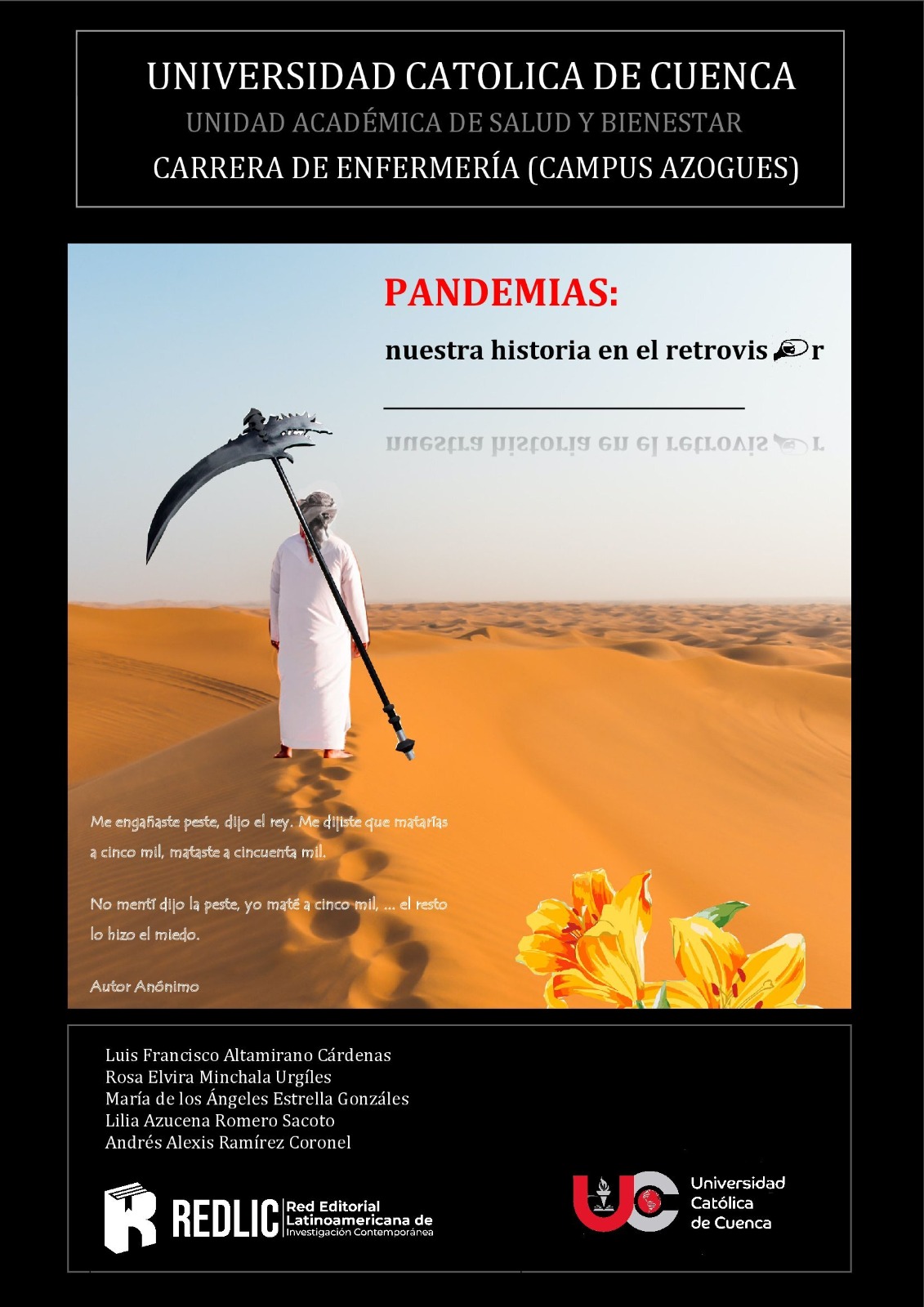Publicación en la Editorial REDLIC
Estimados investigadores:
Nos complace anunciar que contamos con las siguientes vacantes en el Catálogo de Prensa.
1. Editores de sección [7]
2. Editores asociados [10]
The survival of human beings lies in their capacity for socialisation, their life constitutes a constant interdependence with other human beings and all with whom we share this stratum known as the biosphere, our ‘global village’, as the Canadian cultural critic Marshall McLuhan referred to in ‘The Gutemberg Galaxy’ (1962). However, this very circumstance entails risks to its health and to life itself.
The greeting is part of the ritual, and in it the signs of peace and intimacy emerge, for example in the handshake, the hug and the kiss. Suddenly, these social manifestations were considered as risk factors and were suppressed when, on 30 January 2020, the highest United Nations body responsible for leading and coordinating health actions in the world, the WHO, declared a pandemic situation due to a new pathology christened COVID 19, with the imperious need for confinement and social isolation as health measures to halt the unstoppable onslaught of SARS CoV 2 sighted in Wuhan - Hubei province in China.
And so, these displays of fellowship were seen as ‘dangerous transfer mechanisms’ for the new virus, echoing what Nurse Leila Given said in 1929 about the mechanisms of transmission of infectious diseases.
History and the development of epidemiology have documented more than a dozen epidemics since ancient times that have plagued humanity, some of which persist to this day, such as tuberculosis, also known as the ‘great white plague’ or ‘phthisis’, found in human remains from the Neolithic period and in Egyptian mummies.
These ‘infectious’ agents (bacteria, viruses), have been called the ‘killers of history’, because over time they have taken a merciless toll in human lives, some of the most lethal of which we remember: Smallpox, with approximately 300 million victims; Measles, to which some 200 million deaths are attributed; The erroneously known as Spanish Flu (known to have originated in Kansas in 1918), which claimed between 50 and 100 million human lives in two years of activity; it is also said that the Black Death of the 14th century claimed more than 75 million lives; AIDS, which has been present in our environment for four decades and is currently considered to have caused approximately 40 million deaths; another 40 million on account of Cholera. And now, SARS CoV 2, denounced for disrespecting borders and in just one week having spread to 40 countries, taking advantage of the ticket of globalisation and having killed approximately 6.3 million human beings by May 2022. How can we forget that the arrival of the Europeans in Abya Yala, renamed America, generated 17 epidemics that
up to 95% of the aboriginal population in 130 years of colonisation, showing much more effectiveness than the ‘art of war’.
We are aware that these phenomena are not new, and that their presence always leaves indelible sequels in the history of humanity, but not only of terror, isolation, destruction and emptiness, but also of changes, discoveries, progress and questioning of our ‘human coexistence’. Just as they have come to be considered ‘confessed culprits’ of demographic catastrophes; participants in the fall of mighty empires and portentous cities, we should not deny their participation in the architectural and urban development of cities; the adoption of new trade routes and cultural changes (thanks to SARS COV 2, in 2020 the online system is firmly established); Also, consider the development of fundamental sanitary measures and the stopping of terrible fratricidal wars (bubonic plague stopped the so-called ‘100 years war’; Spanish flu stopped the 1st world war, the ‘English sweat’ marked the end of the war of the Two Roses). But ‘microbes’ alone are not the generators of these situations, to condemn them would be to deny the holistic interaction of life.
It is almost 350 years since Antonie Van Leeuwhoeck (1674), broke Francesco Redi's theory of ‘spontaneous generation’, by observing for the first time with a primitive microscope those he called ‘small animalcules’, now we know that their existence dates back some 3. They are considered the most remote and multitudinous specimens that coexist on this planet, on land, in water and in the air; that determine the life cycles of all ecosystems; that have a still unimaginable diversity and versatility to adapt to the most extreme environmental changes; and have a surprising capacity to transform matter into vital energy (such as the bacteria that colonise the roots of plants or the roots of animals).Shannon and Chao's indices indicate that ‘healthy microbiota equals good health’.This account of the history of pandemics is intended to remind us how frequent they are, the effects they produce; that collective deaths leave great voids in families and communities, that they generate an atmosphere of pain, anguish, sadness, impotence and desolation, but also, that EVERYTHING PASSES, and that they offer us the possibility of reinventing ourselves and our lives.They offer us the possibility to reinvent ourselves and always reconsider the utopia of the scientist Louis Pasteur: ‘That nations unite with knowledge to save the planet’, to which the phrases of Eduardo Galeano ‘Utopias serve to walk, so let's walk’, in a coexistence with respect.Dr. Luis F. Altamirano CárdenasCoordinator

Estimados investigadores:
Nos complace anunciar que contamos con las siguientes vacantes en el Catálogo de Prensa.
1. Editores de sección [7]
2. Editores asociados [10]
E-ISSN: 2960-8015
Todos los artículos publicados en esta revista se encuentran bajo la licencia Creative Commons — CC BY 4.0 ATRIBUCIÓN 4.0 INTERNACIONAL
![]()
